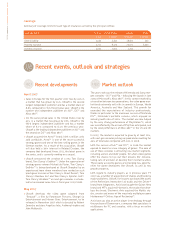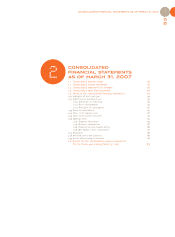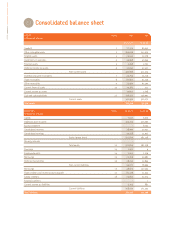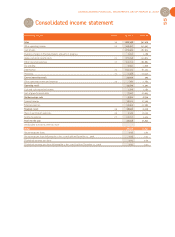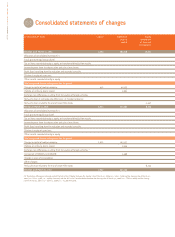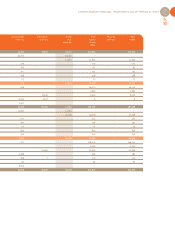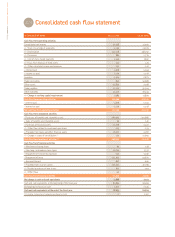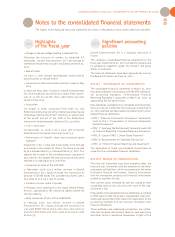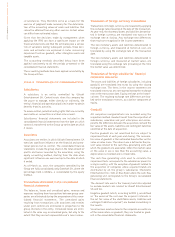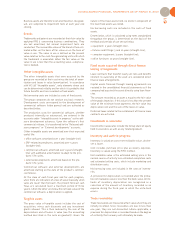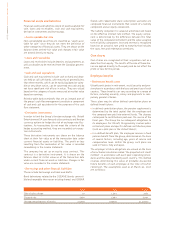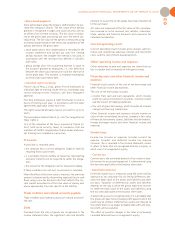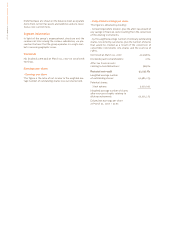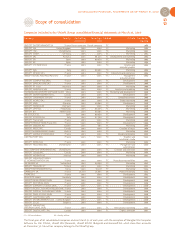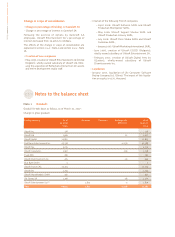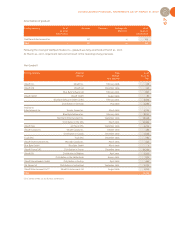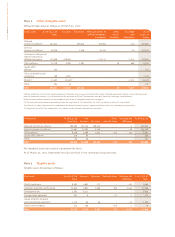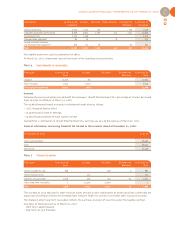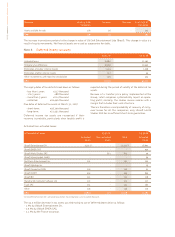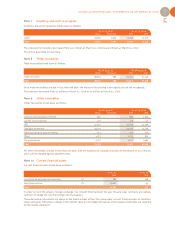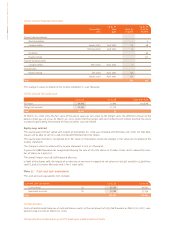Ubisoft 2006 Annual Report Download - page 74
Download and view the complete annual report
Please find page 74 of the 2006 Ubisoft annual report below. You can navigate through the pages in the report by either clicking on the pages listed below, or by using the keyword search tool below to find specific information within the annual report.
UBISOFT • FINANCIAL REPORT 2007
Financial assets and liabilities
Financial assets and liabilities consist of assets available for
sale, loans and receivables, cash and cash equivalents,
derivative instruments and borrowings.
• Assets available for sale
Non-consolidated securities are classified as “assets avai-
lable for sale” since they do not meet the definition of
other categories of financial assets. They are shown on the
balance sheet at their fair value and changes in fair value
are posted directly to equity.
• Loans and receivables
Loans and receivables include deposits and guarantees, as
well as subsidies to be received from the Canadian govern-
ment.
• Cash and cash equivalents
Cash and cash equivalents include cash on hand and depo-
sits held at call with banks, with maturity of generally less
than three months, which can be easily liquidated or salea-
ble on very short notice, can be converted into cash and do
not have significant risk of loss in value. They are valued
based on the category of assets measured at market value
based on earnings.
Reimbursable bank overdrafts that are an integral part of
the group’s cash flow management constitute a component
of cash and cash equivalents for the purposes of the cash
flow statement.
• Derivative instruments
In order to limit the Group's foreign exchange risk, Ubisoft
Entertainment SA uses forward sales contracts and foreign
currency options to hedge the risk of exchange rate fluc-
tuations. As transactions do not meet the criteria of the
hedge accounting method, they are recorded as transac-
tion instruments.
These derivative instruments are shown on the balance
sheet at their fair value as of the transaction date under
current financial assets or liabilities. The profit or loss
resulting from the revaluation at fair value is recorded
immediately in the income statement.
The company has set up an equity swap contract. This
contract is a derivative instrument. It is shown on the
balance sheet at its fair value as of the transaction date
under current financial assets or liabilities. Changes in fair
value are recorded in the income statement.
• Borrowings and other financial liabilities
These include borrowings and bank overdrafts.
Bond debentures related to the OCEANE (bonds converti-
ble/exchangeable into new or existing shares) and OBSAR
(bonds with redeemable share subscription warrants) are
compound financial instruments that consist of a liability
component and an equity component.
The liability component is valued at amortized cost based
on the effective interest rate method. The equity compo-
nent is determined by the difference between the total
value of the compound instrument and the value assigned
to the liability component. Accrued interest is recognized
based on an actuarial rate yield to maturity that includes
the costs, fees and redemption premiums.
Own shares
Own shares are recognized at their acquisition cost as a
deduction from equity. The results of the sale of these sha-
res are applied directly to the equity and do not affect the
profit or loss for the period.
Employee benefits
• Retirement benefit costs
Ubisoft participates in retirement, social security and pen-
sion plans in accordance with the laws and practices of each
country. These benefits can vary according to a range of
factors, including seniority, salary and payments to com-
pulsory general schemes.
These plans may be either defined-contribution plans or
defined-benefit plans:
in defined-contribution plans, the pension supplement is
determined by the total capital that the employee and
the company have paid into external funds. The charges
correspond to contributions paid over the course of the
fiscal year. The Group has no subsequent obligations to
its employees. For Ubisoft, this generally involves public
retirement plans and specific defined-contribution plans
(such as a 401k plan in the United States);
in a defined-benefit plan, the employee receives a fixed
pension benefit from the group, determined on the basis
of several factors, including age, years of service and
compensation level. Within the group, such plans are
used in France, Italy and Japan.
The employer’s future obligations are valued on the basis
of an actuarial calculation called “the projected unit credit
method”, in accordance with each plan’s operating proce-
dures and the data provided by each country. This method
involves determining the value of probable discounted
future benefits of each employee at the time of his/her
retirement. The assumptions used as of March 31, 2007
are as follows:
Japan Italy France
Rate of salary change 5% 1.50% 3-6%
Discount rate 4.49% 4.49% 4.49%
Average remaining years of service 23 years 29 years 31.5 years


